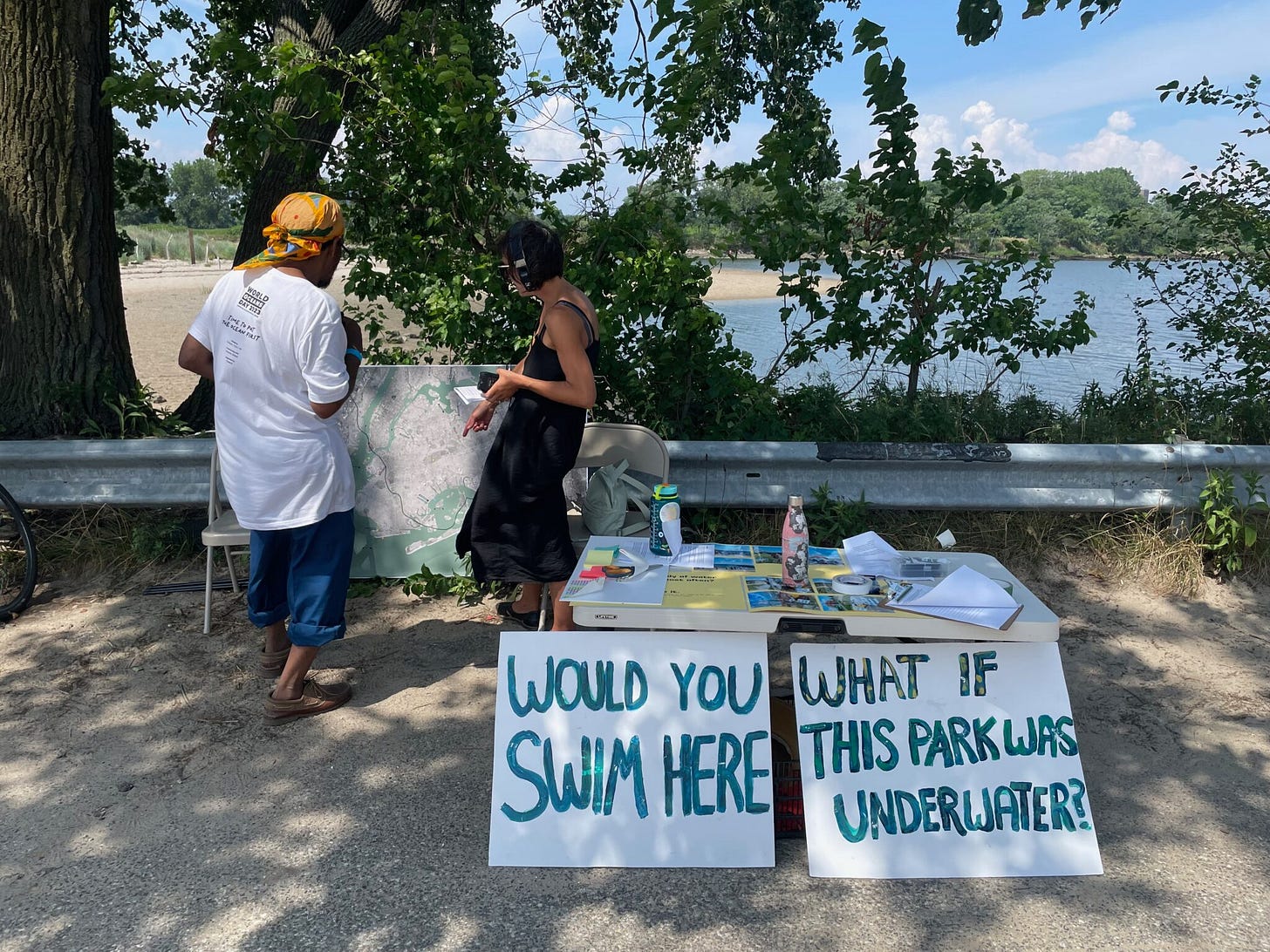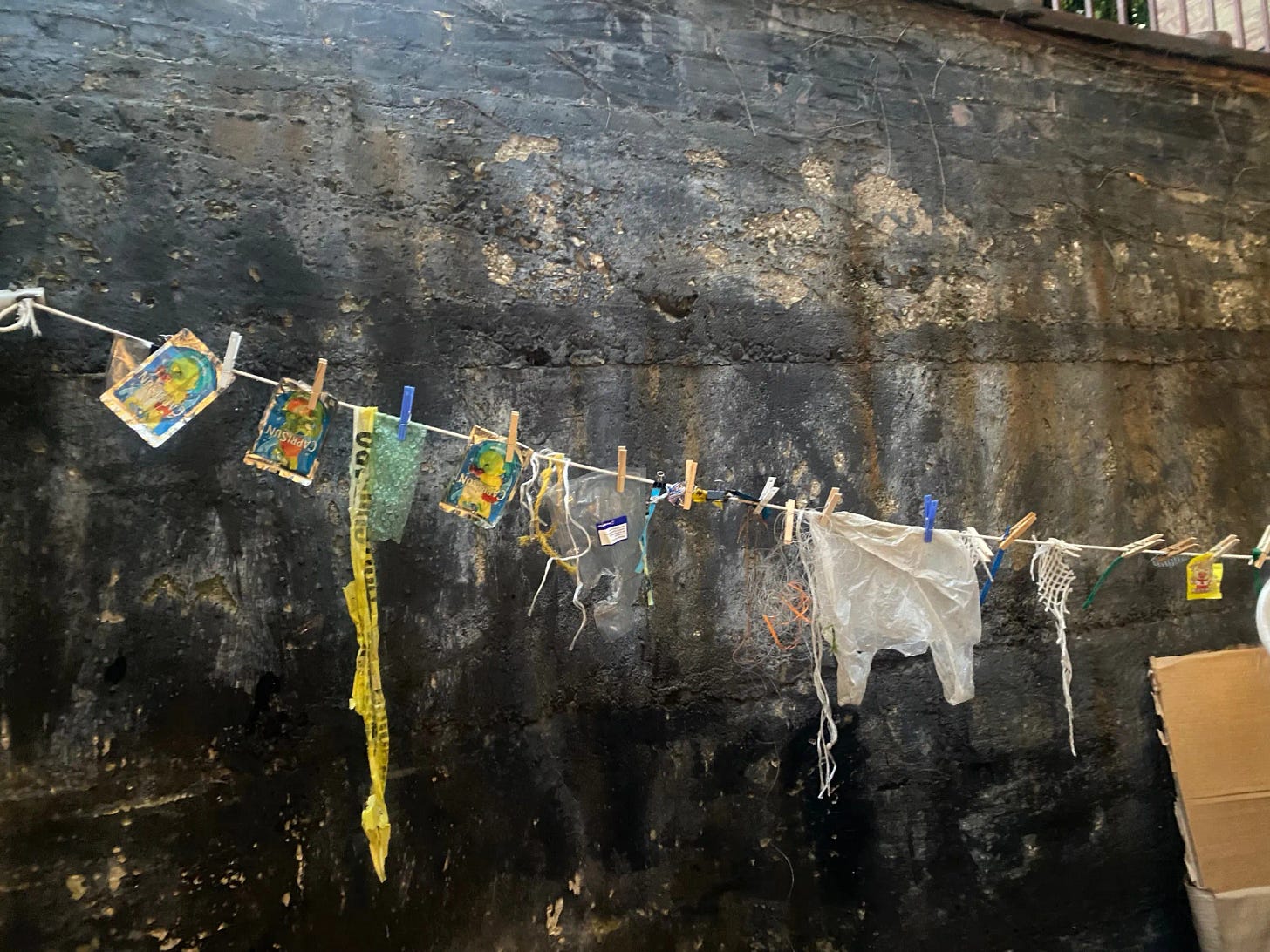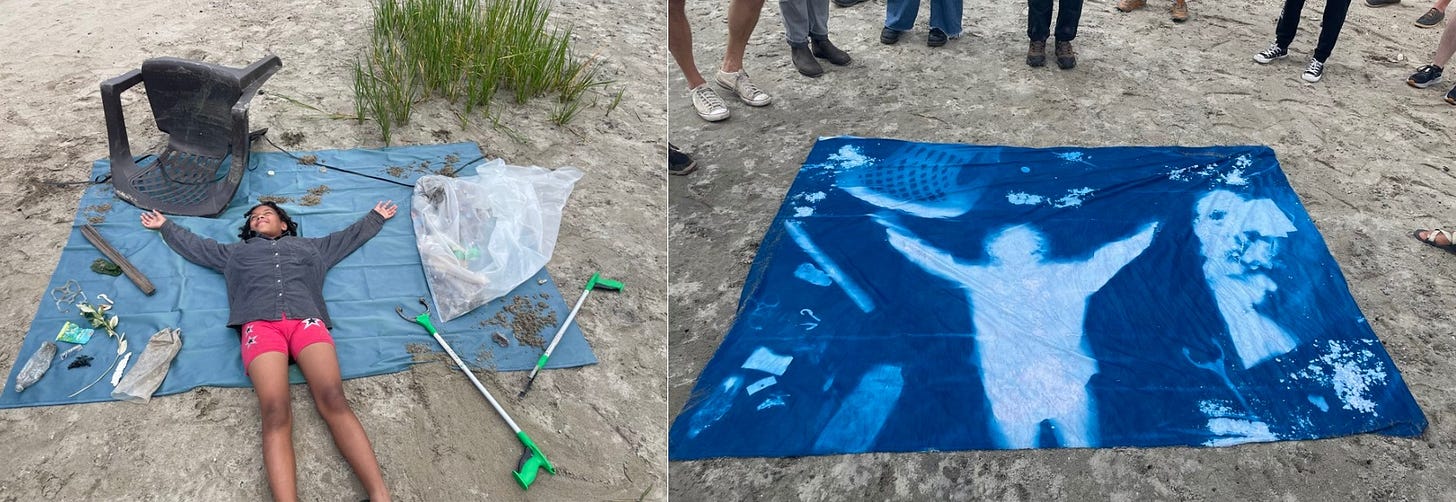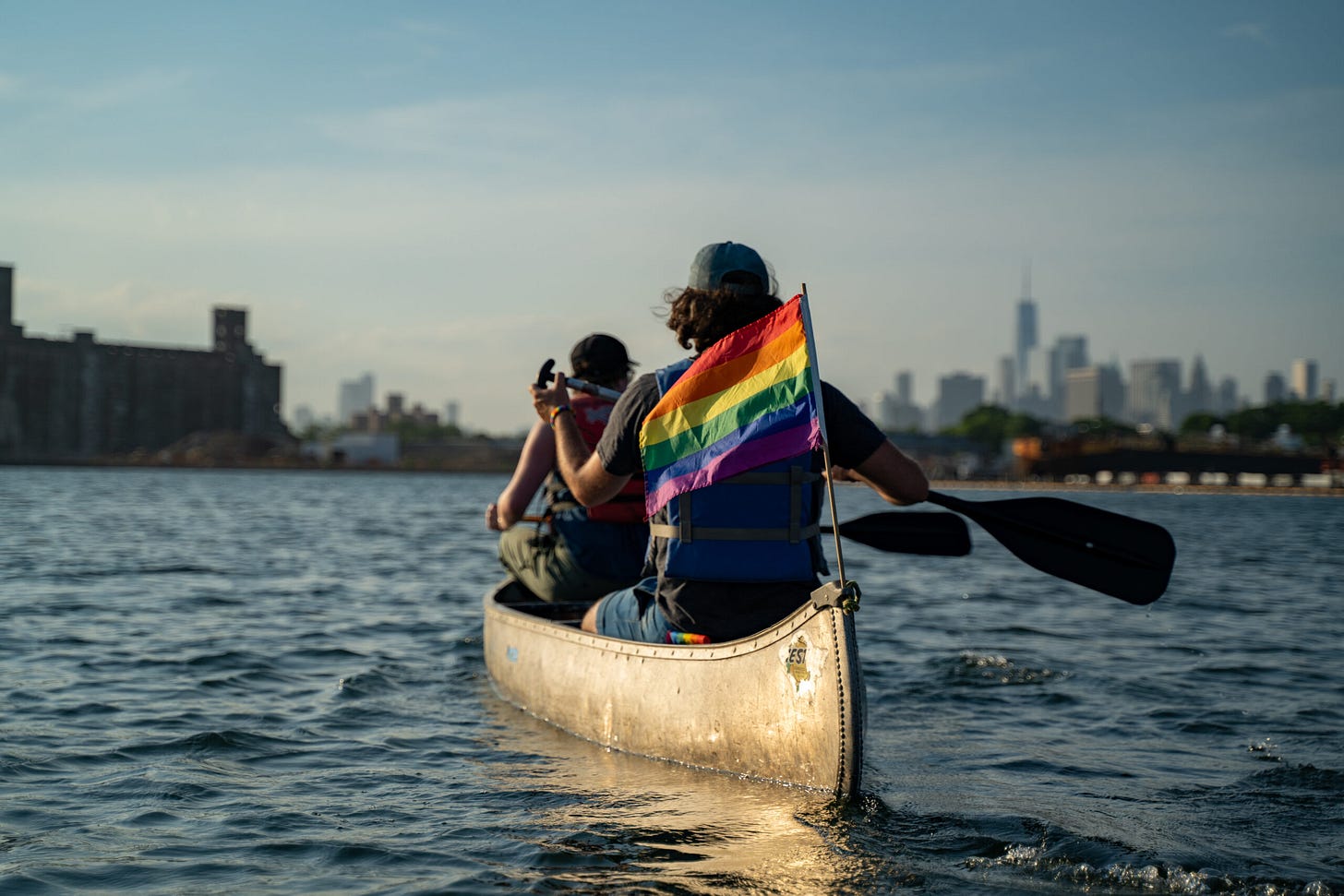Swimming Season at the End of the World 💧
Urban oceans, flood survivors, and what lies under murky waters
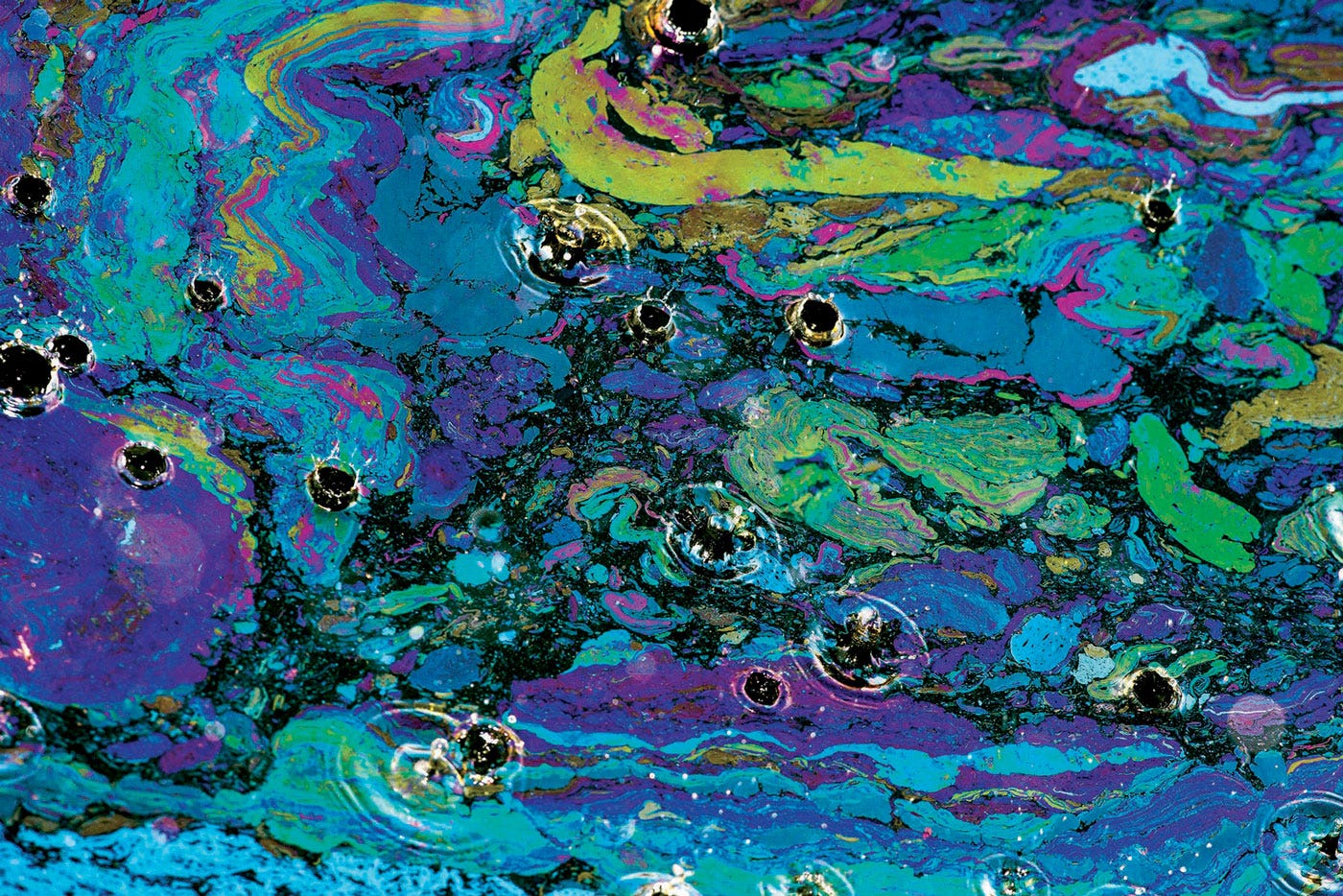
‘You've been wondering about your own relationship to open water. You've been wondering about the trauma and how it always finds its way to the surface, floating in the ocean. You've been wondering about departing, about being elsewhere.’
- Caleb Azumah Nelson in Open Water
Summer calls to mind images of bathing in crystalline pools & crowded coasts, but I didn’t learn to swim (or bike) until I was older. My failed attempts as a child often ended in tears of frustration. As a teenager, it was embarrassing to fumble in front of friends but I eventually improved under their gentle guidance.
I’m not proficient nor graceful: I swim like a frog at times, head above water, never fully submerged for long. Yet I have fond memories of Guatemala’s bodies of water: floating for hours in lake Petén Itzá, gliding through the caves of Semuc Champey, soaking my hair under the waterfalls of Quiché, dipping my toes in the volcanic black sand beaches of Monterrico.
I moved to the U.S. a few years ago and miss being able to swim at my leisure. East Coast waterways feel dirty and the beaches are far too cold for my tropical ass, even during the summer. I still want to relate to the waters that surround me now, which is why an art event in my neighborhood caught my attention: ‘The Beginning of Swimming Season at the End of the World’.
Open Water
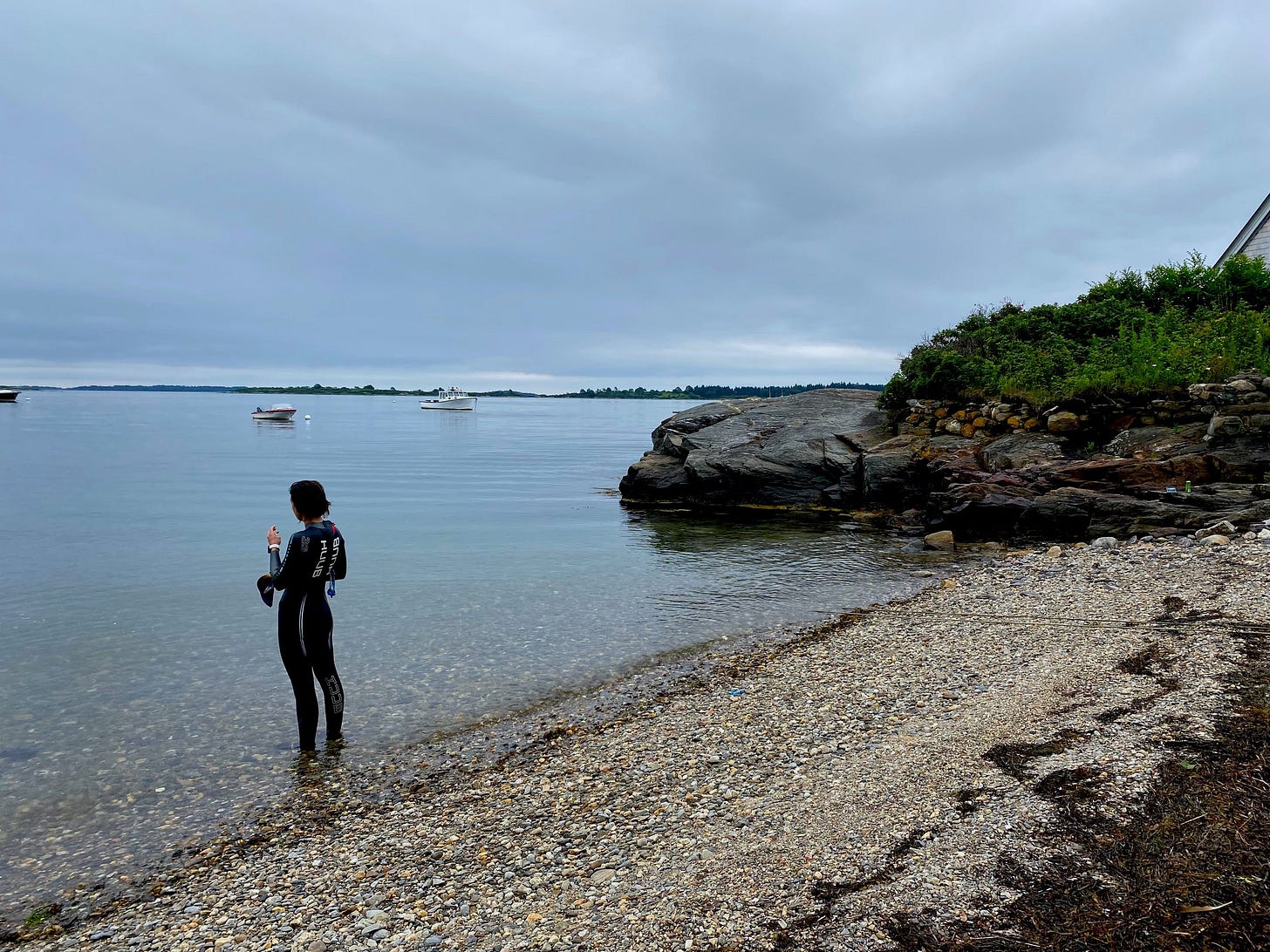
Nora Almeida is a swimmer, educator, librarian, environmental activist, and volunteer at Interference Archive. Her project ‘Open Water’ serves both as archival research and public art that examines disturbed bodies of water.
‘The purpose of Open Water is to explore / perform swimming as an embodied research method and examine political, cultural, ecological, and economic dimensions of water relationships and swimming practices across time and geography. The project incorporates the perspective of people who swim, who can’t swim, who have survived floods, and who have observed how industrial pollution, extraction, colonialism, and urban development have impacted waterfront spaces and people.’
The project is ongoing and has been conducted at Red Hook, Coney Island Creek, and the Gowanus Dredgers Boathouse so far.
It also forms part of Water Connectors, six artworks from the Rockaways to the Bronx that aim to socially engage communities that have historically been barred access to water or are vulnerable to climate change in New York City.
The organization behind the initiative is Works on Water, a web of interdisciplinary artists that use social practice, land, public, and performance art to explore ecological decline through creativity.
Archival Activation
Nora’s project in its various iterations has been a highly collaborative effort with other practitioners and the public to co-create an interactive multi-media archive.
The activities for public participation have included:
urban swimming
conducting oral histories
cleaning the shoreline
art making with discarded objects
attunement exercises
somatic movement
plant & animal identification
history discussions
storytelling, writing, & performing
counter-mapping & annotating
crafting a climate action emergency toolkit
co-facilitating stewardship events
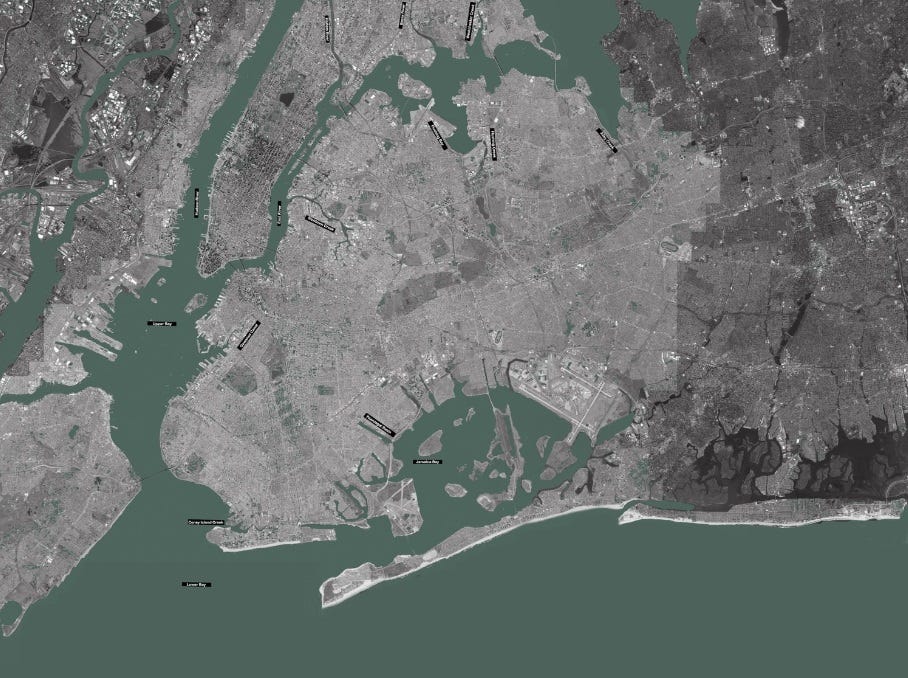
Some of her collaborators include Faith Toran (climate adaptation specialist, artist), Jordan Packer (urban ecologist, designer, educator), and iki nakagawa (videographer, deep listener). Their collaboration:
‘explores relationships between people, water, and shoreline ecosystems and seeks to understand care practices and transcorporeal embodiment––between human bodies, water bodies, and more-than-human species–in the context of climate crisis.’
Oral History
Cyanotype
Gowanus Canal
When I saw Gowanus was one of the locations for this project I was intrigued, and concerned. I live right next to the Gowanus Expressway and only a 20-minute walk from the canal itself.
While it’s not a stretch of the imagination to believe a large metropolitan city like New York would have grimy waterways, I didn’t know Gowanus is considered one of the most polluted bodies of water in the country and has been declared a federal superfund site.
Gowanus has been home to a manufacturing sector since the late 1800s and has hosted gas & chemical plants, coal works, oil refineries, tanneries, sulfur producers, paint, ink, soap, & cement factories, slaughterhouses, and warehouses that have all discharged their waste directly into the canal.
The decades of industrial devastation led to the channel being highly contaminated with pathogens (e.coli, typhoid, gonorrhea, chlamydia, dysentery, cholera), heavy metals (mercury, lead), tar, grease, blood, animal carcasses, and fecal matter. It also contains what’s been dubbed Black Mayonnaise: a combination of oil, coal, pesticides, rotting debris, and raw sewage.

You can learn more about the post-industrial redevelopment and clean-up efforts in this history video, although I enjoy this sarcastic summary:
The toxicity has gotten to such a level that recently there have been reports of cancer-causing vapors, harmful fumes, and polluted soil within 100 blocks of the canal. The bacteria & sludge have even inspired a slew of urban legends such as the myth of the 3 eyed catfish, the musical The Fish Queen of the Gowanus Canal, and the Gowanus Golem, a monster in the horror comic ‘Tales of the Night Watchmen: It Came from the Gowanus Canal’.
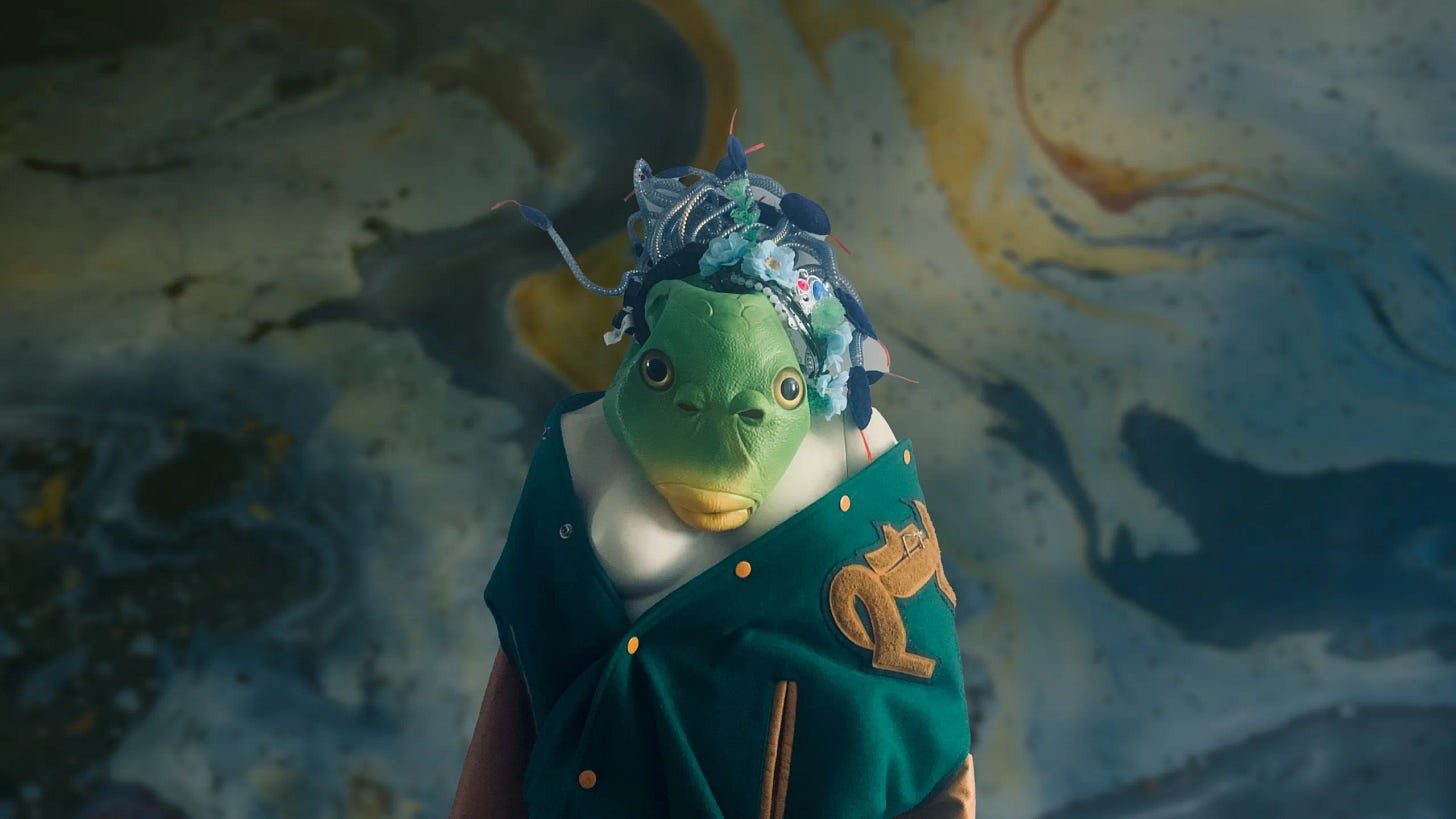
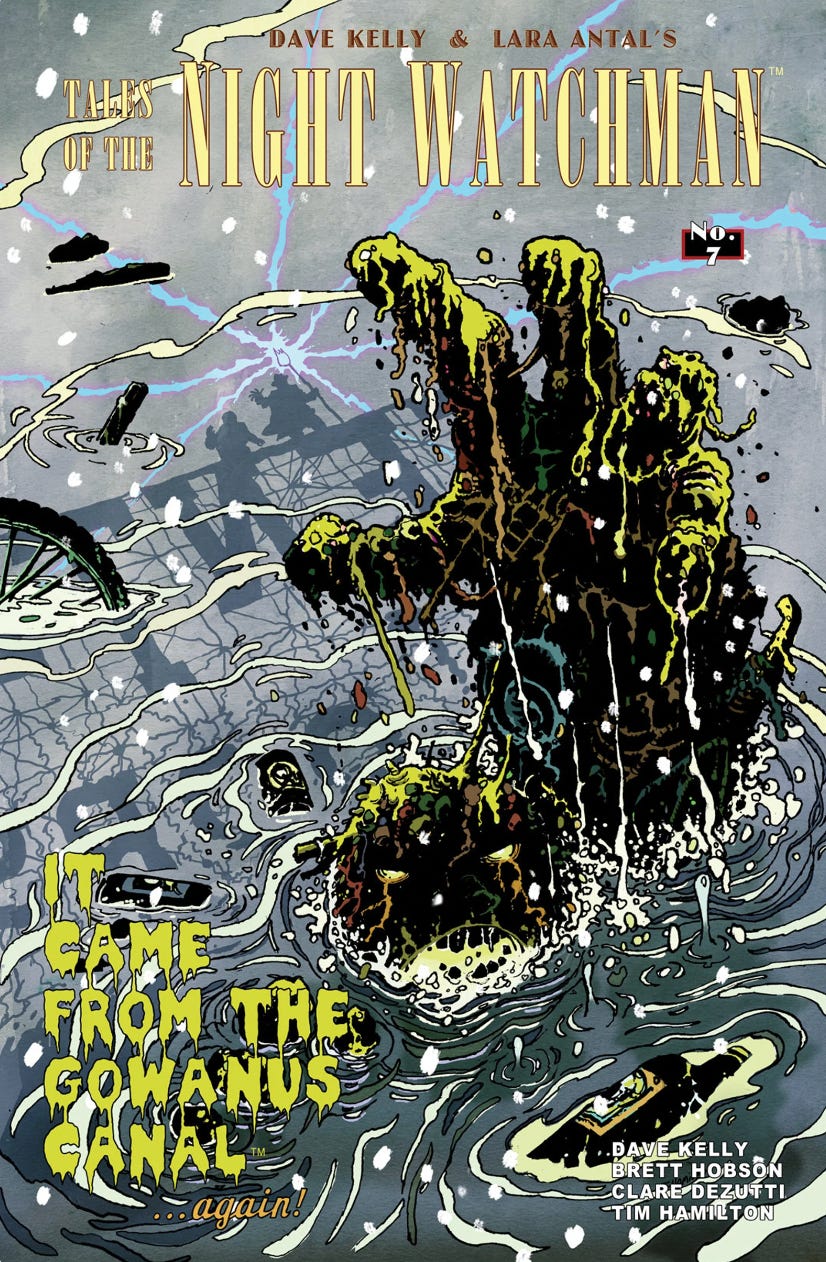
‘In this nightmare, there is only water lapping at your feet, nipping at your heels. Show me your scars, the monster asks. Show me where the snake wrapped itself around your arm and sunk its teeth into soft flesh. You roll up your sleeves and show him the holes littering your limbs. Come out of the shadows, he says. There's no solace in the shade. Show me where it hurt, he says. Don't wait for the water to rise. The water won't save you. You look down and see a warbled reflection in the ripple of the black depths. God has many faces. Many voices. A song in the darkness. Have faith.’
Proud Reclamation
People have always gathered around sources of water as places of nurturance, connection, and chosen family.
In spite of the environmental poisoning & lackluster government accountability, queer communities have found ways to reclaim some of these discarded sites.
On the Gowanus Canal for the past 6 years, a canoe club has been organizing a Pride Paddle as an alternative to the corporate show out in the streets.
‘The site resonated with some in the community. The story of being marginalized and forgotten or actively abused.’
More than a decade after hurricane Sandy, New York City continues to struggle with flood protection plans. The famous boardwalk has recovered but Coney Island is still at risk for permanent inundation.
Despite the lack of long-term climate resilience, Coney Island pays tribute to its maritime sights annually through the Mermaid Parade. The spectacle is welcome to femmes, freaks, and families alike.
The eclectic celebration of summer in the city, aquatic oddities, diy costumes, and shimmering pageantry serves as my unofficial pride event every year.
The festivity is the largest art parade in the United States, but this year it also featured ocean conservation groups, anti-plastic advocates, and protests from allies such as SeaFolx for Seacefire.

Perhaps the water reflects back our status as disregarded creatures seeking to move beyond the toxicity of the past.
‘I love Mermaid because it welcomes everyone to participate. This is going to sound cheesy but, we’re all part of the ocean, we’re all part of the community of the ocean world, and all sea monsters, all fish, all merfolk are welcome here.’
Learning to Swim in NYC
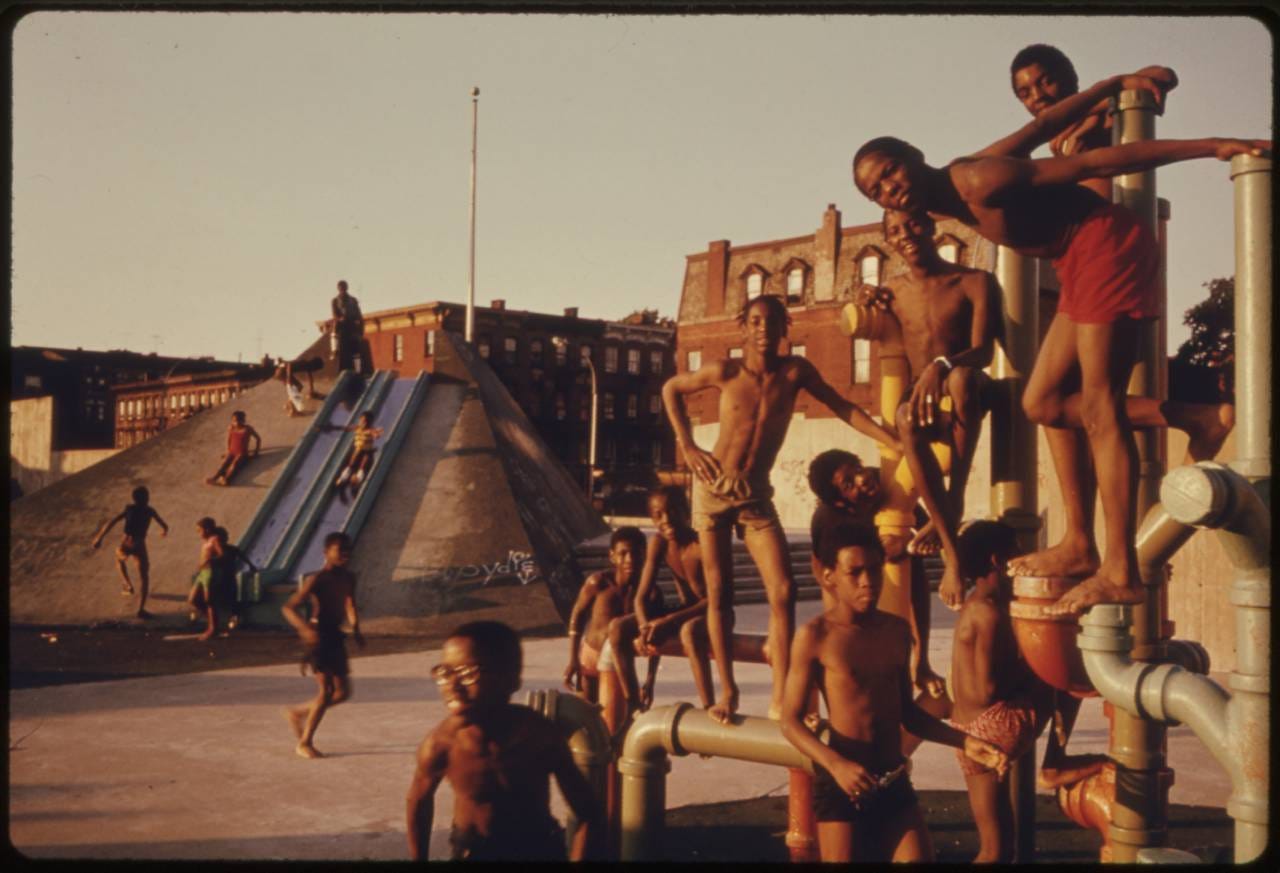
I’ve found so much solace in the sea, despite having learned to swim later in life. Sadly, many never gain this skill due to legacies of classicism & segregation.
However, there are attempts to remediate this. The city is offering free swimming & surfing lessons which I’ll share below:
Where to Swim for Free in NYC
Free Swimming Classes via YMCA, Asphalt Green, Rising Tide Effect, First Strokes, NYC Parks, and Swim Strong Foundation
Free Surf Camp in Queens with Laru Beya Collective
Free Boatbuilding, Sailing, & Rowing in the Bronx
‘Turn to your neighbor and take one step forward as they take another step back, switch positions, move, move, move, become overwhelmed by the water, let it wash over you, let the trauma rise up like vomit, spill it, go on, let it spill on the ground, let go of that pain, let go of that fear, let go.
You are safe here, you said. You are seen here. You can live here. We are all hurting, you said. We are all trying to live, to breathe, and find ourselves stopped by that which is out of our control. We find ourselves unseen. We find ourselves unheard. We find ourselves mislabeled. We who are loud and angry, we who are bold and brash. We who are Black. We find ourselves not saying it how it is. We find ourselves scared. We find ourselves suppressed, you said.
But do not worry about what has come before, or what will come; move. Do not resist the call of a drum. Do not resist the thud of a kick, the tap of a snare, the rattle of a hi-hat. Do not hold your body stiff but flow like easy water.’
- Caleb Azumah Nelson in Open Water
What is your earliest memory of swimming?
What makes a body of water unswimmable?
What are your stories, feelings, fears of water?




